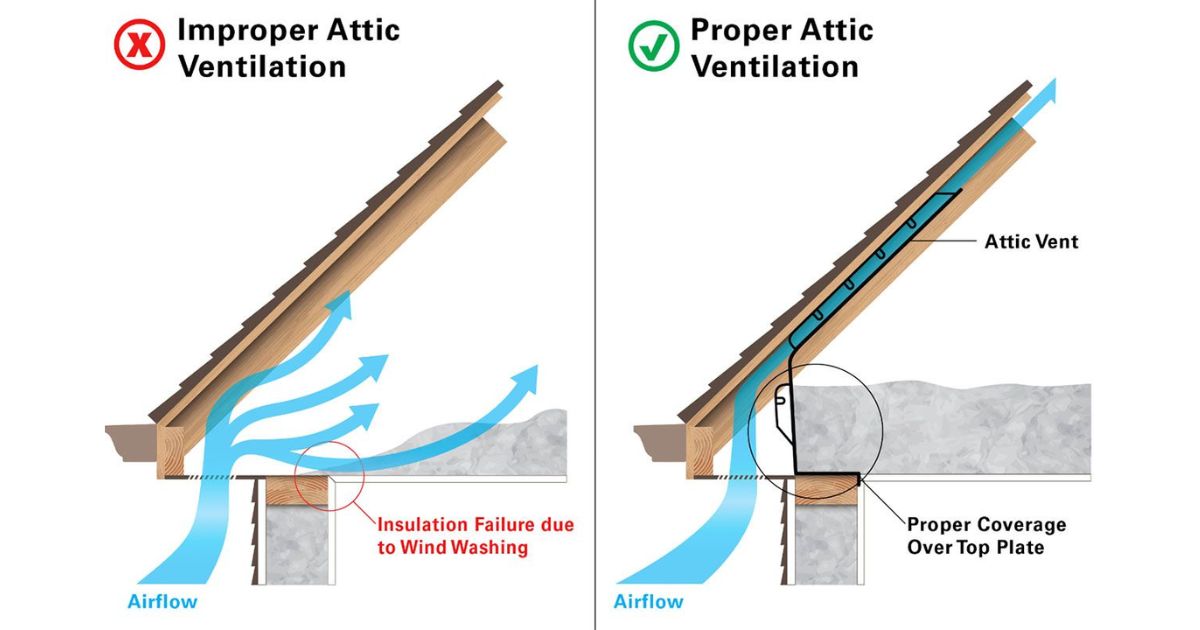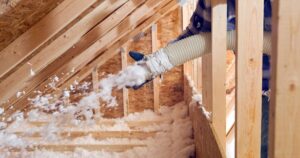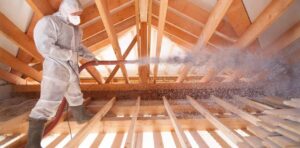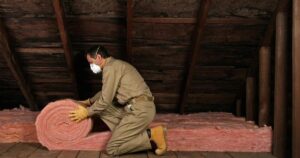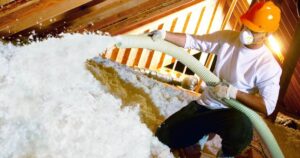When it comes to insulating your home, you may have heard about the benefits of spray foam insulation. It’s known for its excellent thermal performance and air-sealing capabilities, making it a popular choice for homeowners looking to improve energy efficiency and comfort. A common question that arises is whether attics with spray foam insulation need ventilation.
In this article, we will explore the relationship between spray foam insulation and attic ventilation to help you make an informed decision about your home’s insulation needs.
let’s get a better understanding of what spray foam insulation is and how it works. Spray foam insulation is a type of insulation material that is applied as a liquid and then expands into a foam.
Understanding Spray Foam Insulation Need Ventilation
Before we dive into the ventilation aspect, It’s typically used to seal gaps, cracks, and voids in the building envelope, providing an airtight barrier. There are two main types of spray foam insulation:
- Open-Cell Spray Foam: This type of insulation is less dense and allows for some air and moisture permeability.
- Closed-Cell Spray Foam: Closed-cell spray foam is denser and provides a complete air and moisture barrier.
Both types of spray foam insulation offer excellent R-values, which measure the material’s thermal resistance. The higher the R-value, the better the insulation’s ability to resist heat transfer.
The Role of Attic Ventilation
Attic ventilation is a critical component of the overall home ventilation system. It plays a crucial role in maintaining a healthy and energy-efficient home. Proper attic ventilation has several key functions:
1. Moisture Control: Attic ventilation helps to reduce moisture buildup in the attic space, which can lead to mold and mildew growth. Moisture can also compromise the effectiveness of insulation materials.
2. Temperature Regulation: Proper ventilation helps regulate attic temperatures, preventing excessive heat buildup in the summer and minimizing the risk of ice dams in the winter.
3. Air Quality: Attic ventilation ensures the exchange of indoor and outdoor air, improving indoor air quality and preventing the buildup of harmful pollutants.
4. Prolonging Roof Lifespan: Effective ventilation can extend the lifespan of your roof by reducing the risk of shingle damage and deterioration.
The Debate: Ventilation and Spray Foam Insulation
Now, let’s address the question: do attics with spray foam insulation need ventilation? The answer is not as straightforward as a simple “yes” or “no.” The need for attic ventilation in homes with spray foam insulation depends on various factors, including climate, building design, and the type of spray foam used.
1. Climate Considerations:
In hot and humid climates, it’s generally advisable to have attic ventilation, even with spray foam insulation. Ventilation helps expel warm and moist air, preventing condensation and potential moisture-related issues. In contrast, in colder climates, the need for ventilation may be less critical.
2. Building Design:
The architectural design of your home can impact the necessity for attic ventilation. If your attic has a well-designed and airtight building envelope due to the spray foam insulation, there may be less need for additional ventilation. However, older homes with less effective insulation may benefit from improved ventilation.
3. Spray Foam Type:
The type of spray foam insulation used also matters. Closed-cell spray foam, with its superior air-sealing properties, can reduce the need for ventilation, especially in hot climates. Open-cell spray foam, which allows some air permeability, may benefit from ventilation in various climate zones.
Best Practices for Attics with Spray Foam Insulation
To ensure the optimal performance of your attic insulation, consider the following best practices:
- Climate-Specific Solutions: Assess your local climate and consult with a professional to determine the most suitable approach to attic ventilation.
- Airtight Sealing: Properly seal all attic penetrations and ensure the attic floor and walls are airtight.
- Proper Insulation Thickness: Install the appropriate thickness of spray foam insulation to achieve the desired R-value and thermal performance.
- Balanced Ventilation: If ventilation is needed, ensure a balanced system with intake and exhaust vents to maintain airflow.
- Professional Installation: Hire a qualified contractor experienced in spray foam insulation and attic ventilation to guarantee the best results.
FAQ’s
Do all attics with spray foam insulation require ventilation?
No, the need for ventilation depends on factors like climate, building design, and the type of spray foam used. It’s not a one-size-fits-all solution.
Is ventilation necessary in hot climates with spray foam insulation?
In hot and humid climates, ventilation is typically recommended to prevent moisture-related issues, even with spray foam insulation.
Can I skip attic ventilation with closed-cell spray foam insulation?
Closed-cell spray foam’s superior air-sealing properties may reduce the need for ventilation, but it’s essential to consider other factors like climate and building design.
Conclusion
The need for attic ventilation in homes with spray foam insulation is not a one-size-fits-all answer. It depends on factors such as climate, building design, and the type of spray foam used. While spray foam insulation offers excellent thermal performance and air sealing, it’s essential to consider the specific requirements of your home.
Consulting with a professional who understands your local climate and building conditions is crucial to making the right decision. Whether you opt for ventilation or not, the goal is to create a comfortable, energy-efficient, and healthy living environment for your family.

